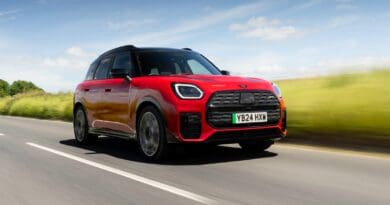
How Do Chinese Brand Electric Vehicles Stay So Cheap? A Supply Chain Deep Dive
In the last decade, Chinese electric vehicle (EV) brands have transformed from niche market participants into global contenders, disrupting the auto industry with models that cost thousands—sometimes tens of thousands—less than their Western counterparts.
In some markets, Chinese EVs are even priced competitively with used cars, yet they often boast advanced features like autonomous driving assistance, AI-powered infotainment, and rapid-charging battery technology.
If you’ve ever entered a “win a car” giveaway or browsed car competitions online, you may have noticed that Chinese EVs are increasingly showing up as prizes alongside high-end models from Tesla or Volkswagen. That’s no accident—their low cost makes them attractive for both consumers and promotional campaigns. But how exactly can these vehicles be so affordable? The answer lies in China’s unique supply chain ecosystem, strategic government policy, and innovative production methods.
1. Vertical Integration and Supplier Clusters
One of China’s biggest competitive advantages in EV manufacturing is its highly integrated supply chain. In industrial hubs like Shenzhen, Guangzhou, and Changzhou, dozens of suppliers for batteries, motors, chips, and even seat upholstery operate within a few miles of each other.
This clustering reduces transportation costs, shortens lead times, and fosters faster communication between manufacturers and parts suppliers. In many cases, the EV manufacturer and its component suppliers share R&D facilities, allowing for synchronized design and production cycles.
By contrast, Western automakers often import parts from multiple countries, which adds shipping costs, tariffs, and weeks—if not months—to production schedules. When your entire supply chain fits into a few industrial parks, economies of scale kick in quickly.
2. Battery Manufacturing at Scale
Batteries are the single most expensive component of an EV, sometimes accounting for 30–40% of total production costs. China is the world leader in battery production, home to giants like CATL and BYD, which supply not only domestic brands but also global automakers like BMW and Tesla.
These battery manufacturers benefit from both vertical integration and massive production volumes, driving down the cost per kilowatt-hour. Additionally, China dominates the global refining of key battery minerals like lithium, cobalt, and nickel. By controlling upstream raw material processing and downstream assembly, Chinese brands keep battery costs significantly lower than their foreign rivals.
3. Government Subsidies and Strategic Policies
For over a decade, the Chinese government has provided generous subsidies to EV manufacturers and consumers. While some of these programs have been scaled back recently, their long-term effects remain. Subsidies helped Chinese EV makers achieve early mass production, invest in R&D, and build domestic brand loyalty.
Furthermore, government-led infrastructure projects—like nationwide high-speed charging networks—reduce the consumer’s “range anxiety,” boosting demand and enabling further economies of scale. Many local governments also offer incentives for companies to set up manufacturing plants, providing cheap land leases, tax breaks, and low-interest loans.
4. Lower Labor and Compliance Costs
China’s labor costs are higher than they were a decade ago, but they are still lower than in Europe, Japan, or the U.S., especially for skilled manufacturing work. Coupled with longer working hours and fewer production bottlenecks, this allows for more flexible and cost-efficient production cycles.
In addition, environmental and regulatory compliance—while tightening in recent years—still imposes lower direct costs on manufacturers than in highly regulated markets like California or the EU.
5. Design-to-Cost Philosophy
Many Chinese EV makers use a “design-to-cost” approach from day one, which means every feature, material, and process is evaluated for its cost-effectiveness before production begins. This doesn’t necessarily mean lower quality—many Chinese EVs now rival or exceed Western models in tech features—but it does mean avoiding costly overengineering in areas the target market doesn’t value.
For example, while a European luxury EV might use premium leather and complex seat adjustment mechanisms, a Chinese brand might use high-quality synthetic materials and simpler mechanisms that still feel premium but cost less to produce.
6. Marketing Through Prize Campaigns
Interestingly, one way these brands expand their reach in foreign markets is by partnering with promotional campaigns, including car competitions and raffles. You’ve probably seen ads where you can “win a campervan” or “win a car” by purchasing tickets or entering a giveaway.
Chinese EVs, being cost-effective yet feature-packed, are increasingly popular choices for these prize draws. For the promoter, it’s a high-value prize that’s more affordable than a European or American equivalent. For the EV manufacturer, it’s free publicity and a way to put more cars on the road, creating organic word-of-mouth marketing.
7. Export-Ready Production Lines
Chinese automakers design their factories with export in mind. Many production lines are flexible enough to produce both left-hand and right-hand drive vehicles, and to meet various international safety standards. This flexibility allows them to quickly respond to demand in different countries without costly retooling.
They also leverage partnerships with foreign distributors to bypass some of the high costs of setting up independent dealer networks abroad.
8. The Future: Will Prices Stay Low?
While Chinese EV prices are likely to remain competitive for the foreseeable future, there are pressures on the horizon. Rising raw material prices, potential trade tariffs, and competition from other low-cost producers (such as in Southeast Asia) could squeeze margins. Additionally, as global safety and emissions standards become more stringent, compliance costs may rise.
However, Chinese manufacturers are already working on innovations like sodium-ion batteries, which could further slash costs. If these technologies succeed, we could see even cheaper EVs entering both domestic and global markets—possibly showing up even more often in promotional prize campaigns and giveaways.
Chinese electric vehicles are affordable because their manufacturers leverage an exceptionally efficient supply chain, government support, large-scale production, and export-oriented flexibility. By integrating production, controlling battery technology, and streamlining design, they are able to keep costs low without compromising on innovation or quality. This combination is reshaping the global EV market and challenging long-standing industry leaders.





